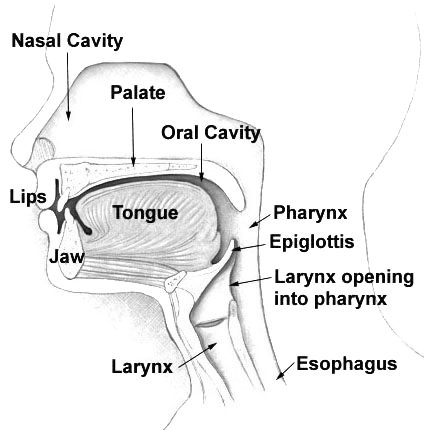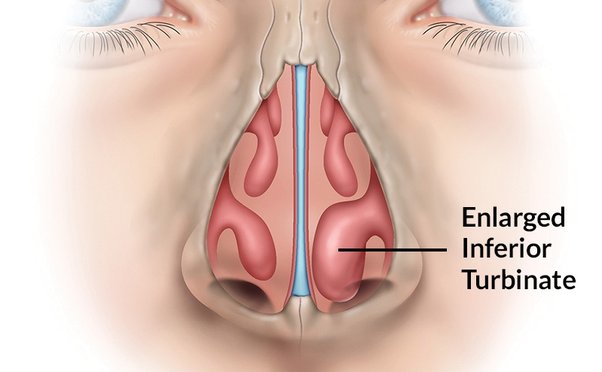Complications of Septal Perforation
Septal perforations pose a significant threat to this central support system, leading to the destabilisation of the middle nasal region and the potential development of a saddle nose deformity. In severe cases, individuals may experience the collapse of the entire cartilaginous framework, resulting in marked deformity and a twisted appearance. Complications stemming from septal perforations are diverse and include:
1. Nasal Obstruction
Difficulty breathing due to partial or complete nasal blockage.

Image (1): Nasal Obstruction | Author: OpenStax College | Image courtesy: Wikipedia.
2. Saddle Nose Deformity
A visible depression along the nasal bridge, altering the nose’s shape.
Image (2) : Saddle Nose Deformity | Author: OpenStax College | Image courtesy: Wikipedia.

3. Nasal Valve Collapse
Dynamic collapse of the nose during breathing, impacting comfortable breathing.

Image (3) : Nasal Valve Collapse | Author: OpenStax College | Image courtesy: Wikipedia.
4. Cellulitis
Inflammation and infection of the nose’s tissues, causing pain, swelling, and redness.

Image (4): Cellulitis | Author: OpenStax College | Image courtesy: Wikipedia.
5. Turbinate Hypertrophy
Characterised by swelling and enlargement of the nasal turbinate’s, contributing to nasal congestion.

Image (5) : Turbinate Hypertrophy | Author: OpenStax College | Image courtesy: Wikipedia.
6. Chronic Nasal Pain
Involves ongoing discomfort in the nasal area, significantly affecting the individual’s quality of life.

Image (6): Chronic Nasal Pain | Author: OpenStax College | Image courtesy: Wikipedia.
Conclusion
Large septal perforations can lead to structural problems within the nose, including the development of a saddle nose deformity or complete nasal collapse. To address these issues comprehensively, functional rhinoplasty, integrating structural rhinoplasty with septal perforation repair, emerges as a highly effective surgical technique.
